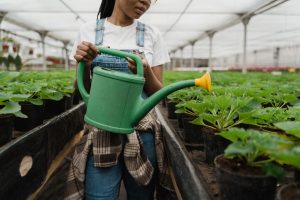Oyster season, which traditionally runs from fall through early spring, is a great time to harvest business stories on these tasty bivalves. Particularly as the oyster industry, global in scale, continues to evolve.
Get the core facts
To write authoritatively about oyster season, consider the core facts.
• Five species exist among oysters, known as a “bivalve mollusk,” including European flat, Pacific oysters (also known as Japanese oyster), Kumamoto oysters, Atlantic oysters and Olympia oysters, according to the Food Republic.
• The water in which the oysters grow (and the shells) is what distinguishes each species from one another.
• Not all oysters can make pearls. Edible oysters do not contain pearls at all. Oysters come from two-family types: Edible oysters are part of the ostreidae family, whereas pearl oysters (known as pinctada) belong to the pteriidae family, the Food Republic reports.
• The old adage that you should only eat oysters in months with the letter R is actually true, mainly due to the cooler temperatures.
Understand the global picture
The United States is a major player in global aquaculture. This country supplies advanced technology, feed, equipment and investment to other producers of seafood around the world, according to the Department of Agriculture. But in terms of true production, the U.S. is a minor player, even considering entrepreneurs creating small oyster production facilities as part of the farm-to-table movement. Consider this other data:
• Sales of domestic marine aquaculture grew 13 percent per year from 2007-2011, mostly because of oyster and salmon production.
• China accounts for 62 percent of global aquaculture production and Asia, 89 percent.
• Smaller producers of oysters in the U.S. are growing. One expert cites 1,000 small farms on the East Coast alone and 300-400 oyster brands.
• Farmed oysters, mussels and clams account for around two-thirds of total U.S. marine aquaculture production.
Know the environmental angle
Aside from being a tasty indulgence, oysters also help the environment. Calcium-rich oyster shells create a fertilizer that enriches garden soil by improving the pH balance, strengthening the cell walls of plants and brightening flowers.
Oysters are filter feeders, meaning they suck in water, filter the plankton and other contaminants in the water, then spit the water out.
Reports consistently record rising CO2 levels putting U.S. oyster hatcheries at risk. When an oyster hatchery in Oregon collapsed in 2012, researchers were surprised to find acidic water levels were the cause. This article in planet save.com outlines some of the other environmental risks around oysters.
Learn about save-the-oysters projects
Due to the ongoing risks to oyster hatcheries and oyster production in New York, big business is teaming with nonprofits and schools to help purify the waters in which oysters grow. The six-year-old Billion Oyster Project is an ecosystem restoration and education project aiming to restore one billion live oysters to New York Harbor. (Oyster reefs once covered 220,000 acres of the Hudson River estuary and provided a valuable ecosystem, cleaning the water and providing a habitat for other marine species.) According to its website, the project engages schoolchildren through restoration based STEM education programs. So far, results have been phenomenal with the project restoring over 19 million oysters.
Additionally, NPR reports that states including Virginia are also working to increase wild oyster populations by restoring habitats and reefs.
Reporter’s Takeaway
• While the U.S. doesn’t produce a lot of oysters from a global standpoint, farmed oysters, clams and mussels account for around two-thirds of total U.S. marine aquaculture production.
• Oysters help the environment by helping filter water of contaminants; and the calcium within oyster shells provide an excellent soil fertilizer.
• Major projects are underway to restore oyster production, particularly in New York where the Billion Oyster Project has already restored over 19 million oysters within six years.











